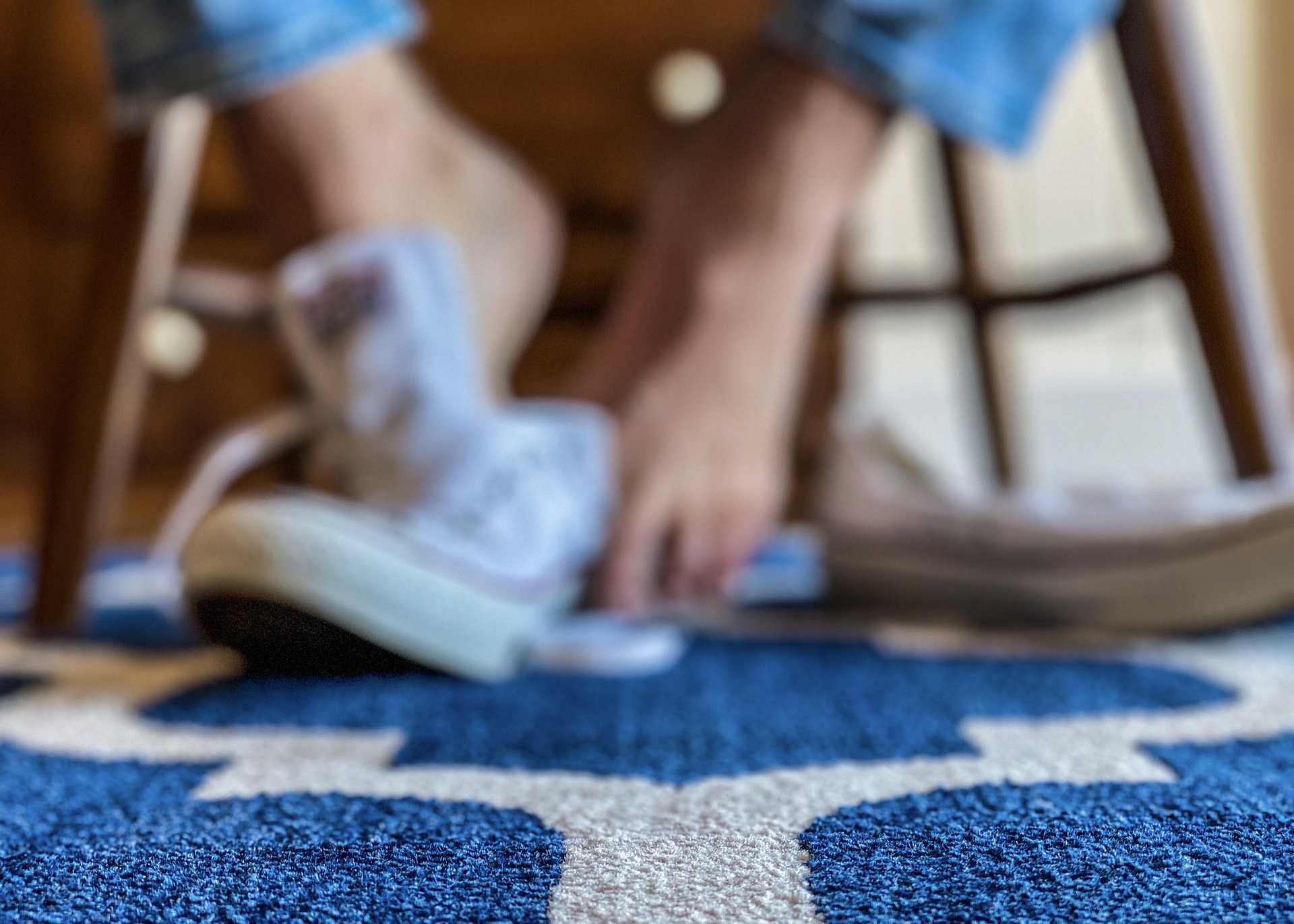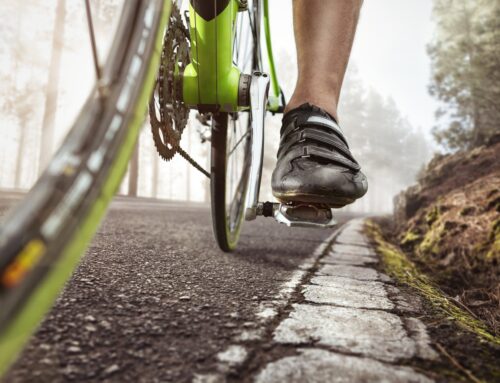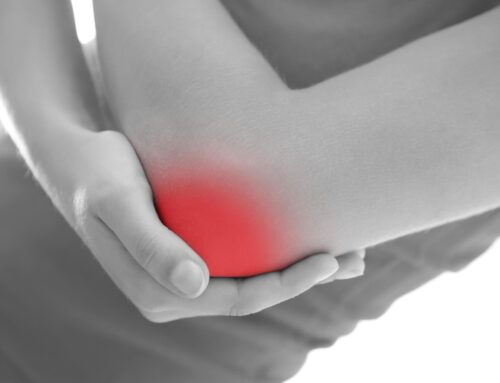If you suffer from frequent leg pain, you might be suffering from Deep Vein Thrombosis (DVT). This can be a serious and unpleasant condition, but it’s also something that can be treated. One way to help blood flow move is to use compression therapy, which uses varicose vein stockings to provide gentle pressure that helps blood move through the body – and your legs. Below are ways you can deal with Deep Vein Thrombosis (DVT) and varicose veins while also aligning your feet.
What is Deep Vein Thrombosis (DVT)
Deep vein thrombosis (DVT) is a blood clot that forms in the deep veins of the legs. It can be very serious if it breaks loose and travels through the bloodstream to the lungs. This is a pulmonary embolism (PE).
The clot can block blood flow through one or more of your deep veins, causing pain and swelling in your leg. If a clot breaks free from its original site and travels to the lungs, it can cause chest pain and difficulty breathing.
A DVT usually develops in one leg but can also occur in both legs. DVTs rarely cause any signs or symptoms, so most people don’t realize they have them until an imaging test or other test finds them.
What are the symptoms of Deep Vein Thrombosis (DVT)?
Blood clots can be dangerous because they can break off and travel to other parts of the body, where they can cause serious problems. Symptoms of DVT include:
- Tenderness, swelling, or pain in the affected leg
- Pain that worsens with movement of the affected leg
- Red or discolored skin on your ankle or foot
- Fluid buildup under your skin that is bulging or swelling
Who is at a high risk of getting Deep Vein Thrombosis (DVT)?
In general, anyone can develop DVT. But certain people are at higher risk than others of developing DVT. Some of these people include:
- If you’re over 60 years old
If you’re over 60 years old and have a long-haul flight, it’s a good idea to take some preventative measures. DVT is more common for older people because of their reduced mobility, so if you are traveling with an older friend or relative, try to ensure that they keep moving around when on board the aircraft. - If you’re pregnant
Being pregnant or breastfeeding increases the risk of developing DVT because, during pregnancy, the hormone estrogen releases into the body, which prevents blood clots from dissolving properly. This means that even if you haven’t suffered from DVT before pregnancy or while breastfeeding, it’s still very possible that you could develop it during these times. - If you’re heavier person
If you’re heavier person, you have a higher risk of developing deep vein thrombosis (DVT). This is because fat tissue increases the time it takes for blood to flow through your veins and carry oxygen back to your heart. - If you use tobacco products
Tobacco use increases your risk of DVT. If you smoke or chew tobacco, the chemicals in these products can cause the blood to clot more easily than usual. Smoking also causes your blood pressure to rise, which puts more strain on your veins and makes them more likely to become clogged with clots.
Compression Therapy for Deep Vein Thrombosis (DVT)?
One of the best ways to deal with Deep Vein Thrombosis (DVT) is to wear a pair of custom-made orthotics. If you have DVT, you may be taking blood thinners or other medications that make it hard for your veins to squeeze back up after they’ve been stretched by sitting or standing for long periods of time. This means that your veins are more likely to clot, which can lead to serious complications like pulmonary embolism (PE). Custom-made orthotics can help prevent DVT by improving leg circulation and preventing strain on the lower body, which often causes blood clots in the legs and feet.
Compression therapy can also help improve the circulation in your legs and reduce the risk of developing DVT. Compression stockings help keep blood from pooling in the lower part of your body by using elastic bands that apply pressure to the surface of your skin. This helps move blood through your veins faster and reduces swelling.
What Are Varicose Veins?
Varicose veins you can see on the surface of your skin. They often look like cords or ropes under your skin and can be blue, purple, red, or dark brown. Varicose veins usually occur in the leg and thigh area, but sometimes they can also develop in other parts of your body. They’re most common in women who are pregnant or in menopausal women because hormonal changes affect the blood vessels’ ability to support themselves against gravity. Men can also get varicose veins.
Varicose veins are benign (noncancerous) conditions, but they can cause discomfort and even painful swelling. They may also lead to other complications, such as ulcers and hemorrhoids (piles).
Compression Therapy for Varicose Veins?
There are many ways to deal with varicose veins, ranging from conservative measures like Compression Therapy to more invasive procedures like vein stripping or laser surgery.
Wearing custom-made orthotics
Orthotics support your feet and legs actively. Each patient receives custom-made orthotics tailored to their foot type, arch height, and weight distribution. These orthotics are crafted from foam or plastic, molded over a cast of the affected foot.
Your shoes accommodate custom-made orthotics seamlessly, minimizing movement during walking or exercise. This prevents undue pressure on your feet, averting potential pain or discomfort. Precise fitting also curbs unnecessary ankle and knee joint movements, factors that can contribute to varicose veins in the legs.
Compression Therapy
Compression stockings help squeeze the walls of your leg veins together so that blood can flow through them more easily. They’re usually recommended for people who have chronic venous insufficiency (CVI), also called chronic venous disease (CVD). CVI happens when valves become damaged or weakened over time, resulting in blood leaking backward into the legs instead of flowing up towards the heart properly.
Exercise
Regular exercise can help improve circulation and strengthen muscles that support your veins. It’s also important for overall health and fitness — regular exercise helps you maintain a healthy weight and lowers your risk of other diseases such as heart attack and stroke.
Elevate your legs
If you’re stuck at a desk all day, try elevating your feet whenever possible. This helps to keep blood flowing back up toward the heart rather than pooling in the veins of your legs, reducing the risk of varicose veins and swelling.
Can Customized Orthotics Improve Your Foot Alignment?
Orthotics are devices that are placed in shoes to help support the foot and ankle. They are made from a variety of materials, including plastic and foam, and they help to re-align bones or muscles that have been injured or misaligned. (Orthopedic Shoes vs Custom Orthotics)
Customized orthotics are designed specifically for the individual who will wear them, so they can help improve their alignment and support structure—which means they’ll be more comfortable, last longer, and be less likely to cause injury or discomfort down the line.
Compression stockings are a great aid in helping improve the symptoms of deep vein thrombosis and varicose veins. Both conditions occur when the veins do not work properly. This can be due to genetic factors, after surgery, or a traumatic injury such as that from a car crash or fall, for example. Compression Therapy help regain the blood flow back to the heart by strengthening the veins and improving blood circulation
Share This Story, Choose Your Platform!
Table of Contents
- for Varicose Veins and DVT
- What is Deep Vein Thrombosis (DVT)
- What are the symptoms of Deep Vein Thrombosis (DVT)?
- Who is at a high risk of getting Deep Vein Thrombosis (DVT)?
- Compression Therapy for Deep Vein Thrombosis (DVT)?
- What Are Varicose Veins?
- Compression Therapy for Varicose Veins?
- Can Customized Orthotics Improve Your Foot Alignment?
We specialize in orthotics, body braces, and compression wear tailored to your unique needs in Toronto. Reach out to us at info@caremed.care or call 416-782-5353 to book your fitting and consultation.
Experience the difference of customized solutions designed just for you.











